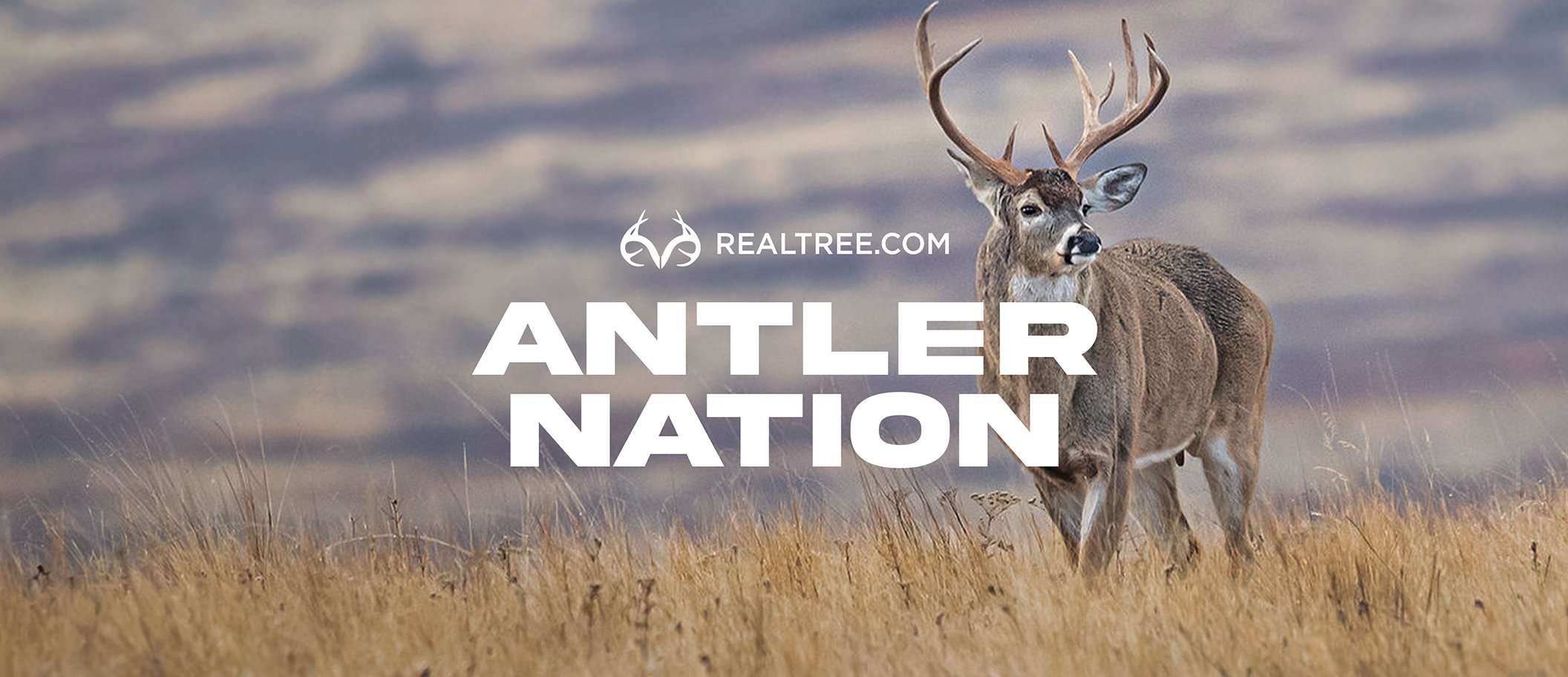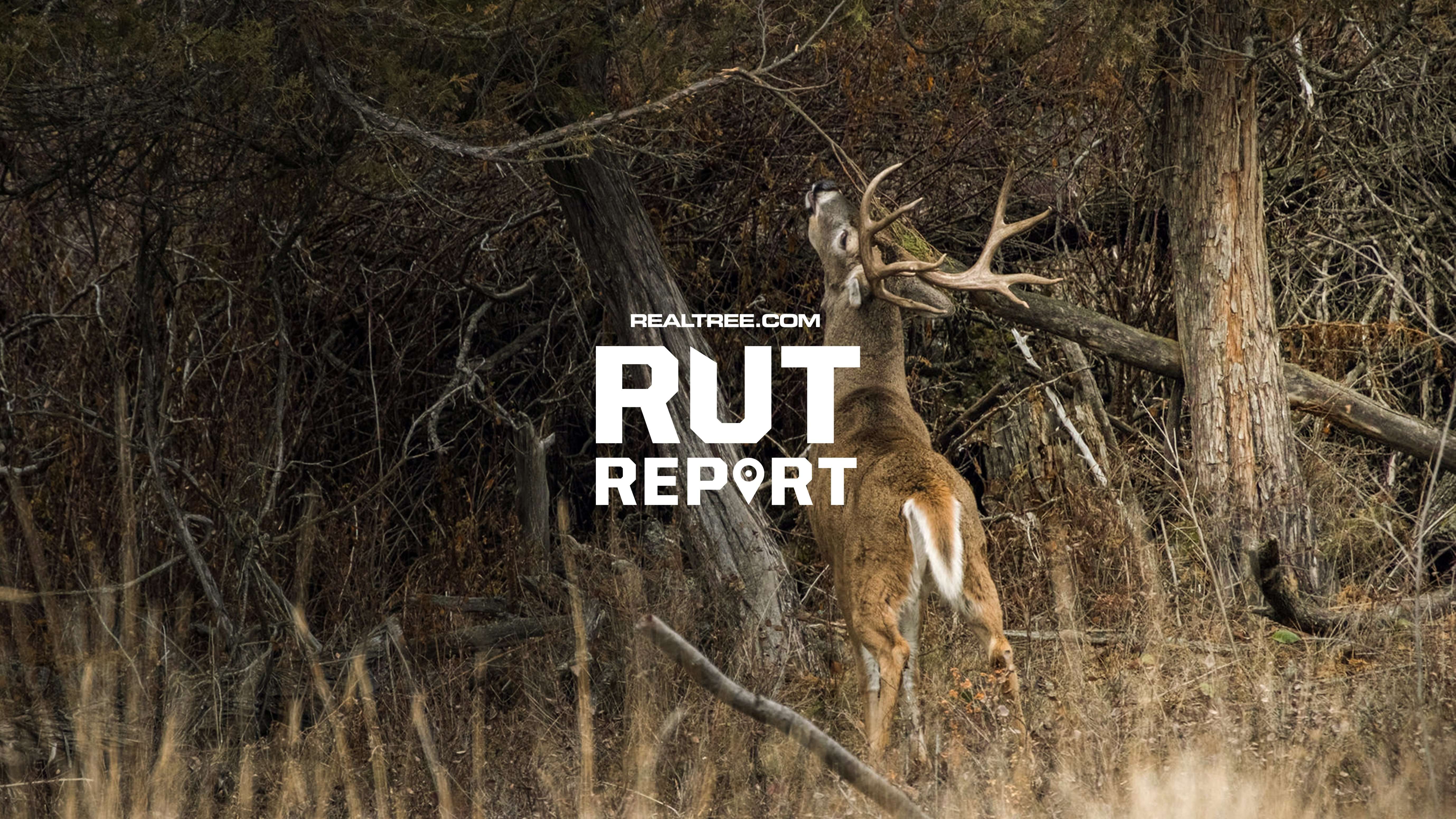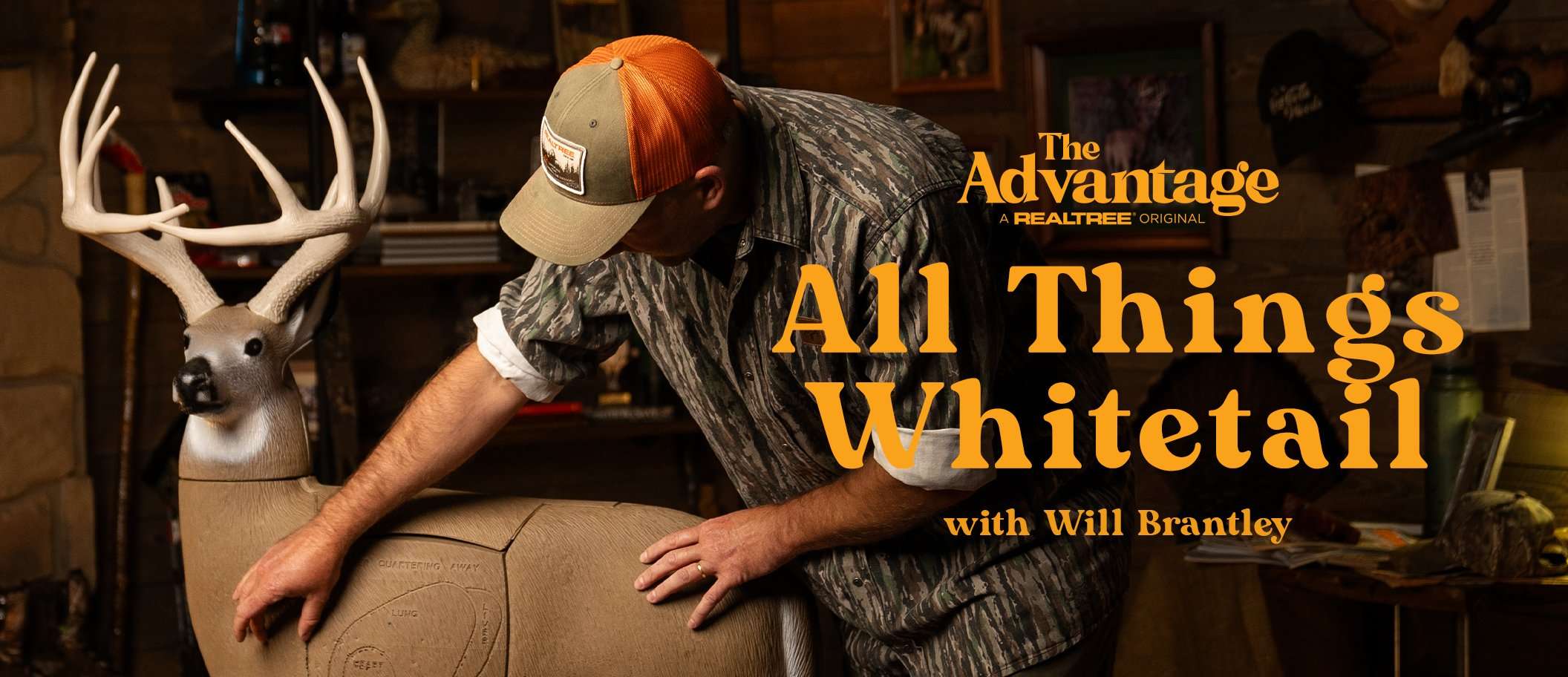If you’re looking to upgrade your favorite rifle’s glass or top a new gun with a reliable scope, shop with these must-have attributes in mind
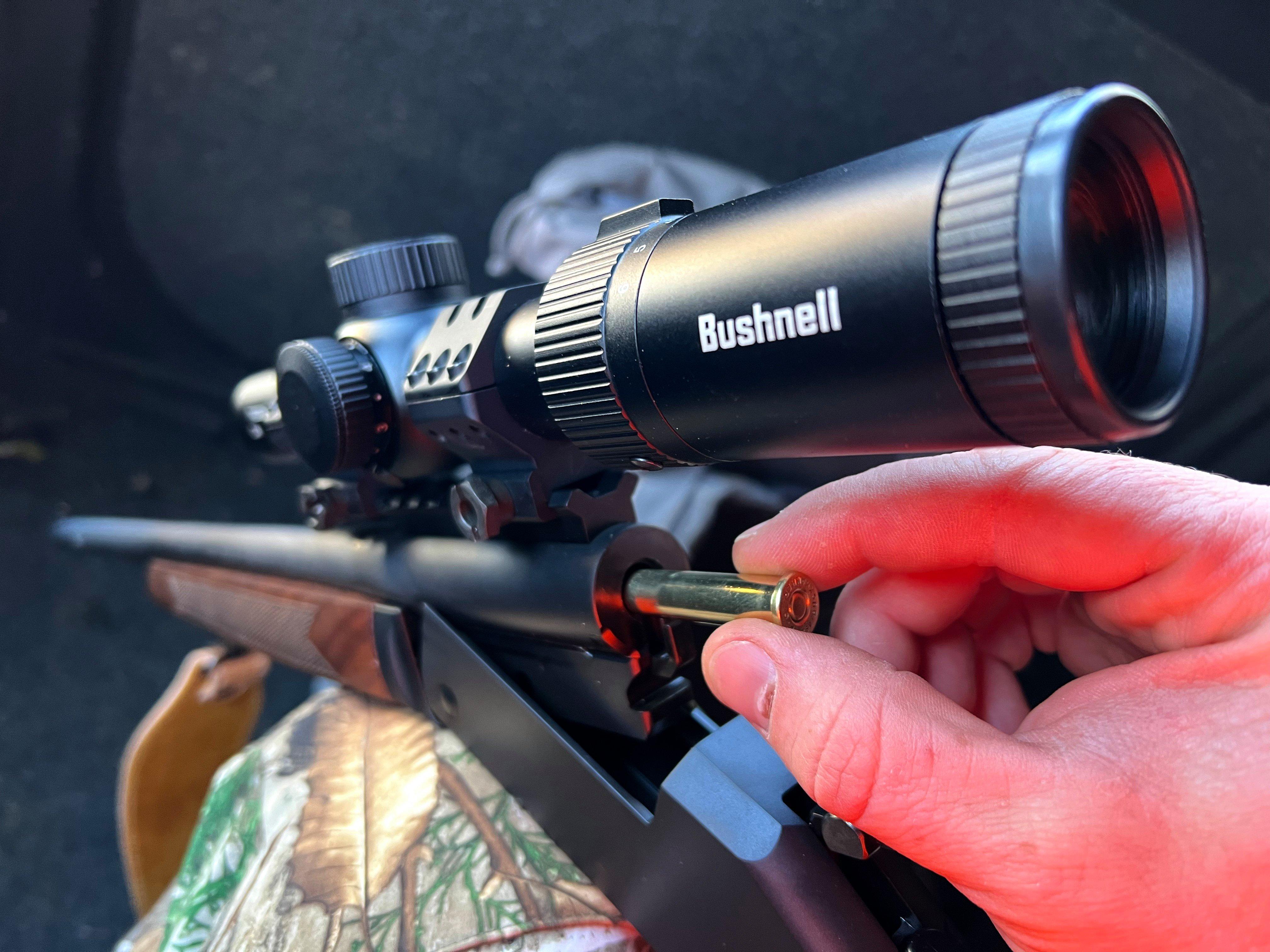
You don’t need to drain your bank account to get a good scope. You just need to make sure that it checks the five boxes discussed in the article. Photo courtesy of Darron McDougal.
I was hunting over an Illinois winter wheat plot when the mature 8-pointer and his smaller compadre walked out. They were 130 yards away — already within rifle range — when I saw them, but both were calm, so I took my time preparing to shoot.
The larger deer moseyed toward a loan oak tree bearing fresh acorns. Small limbs obstructed his vitals, so I held off shooting, but stayed ready. Just as he cleared the limbs, he jerked his head up and fixated on my blind. A breeze was blowing right to him, and I knew he was about to bolt. My calm opportunity had rapidly become a now-or-never chance.
Fortunately, I had a Bushnell Trophy 1-6x24mm scope on my Henry .360 Buckhammer. The variable low-powered optic was ideal for a whitetail scenario like that, where the action can happen up close and fast. The glass was bright and clear, and I was able to quickly bury the crosshair on the buck’s lungs and squeeze the trigger. He piled up just 15 yards off the plot.
The right optic on your rifle can make a huge impact on your success. Different hunting scenarios call for different scope styles, of course, but shopping with these five best practices in mind is always a good idea.
LOOK FOR CLARITY AND BRIGHTNESS IN LOW LIGHT
Big game animals are typically most active during the first and last hours of daylight. To make a shot in low light, you not only need brightness so that you can see the animal, but also clarity so that you can distinguish details, such as the animal’s legs and shoulder. This will help you determine the angle of the animal and choose the right aiming point.
Various coatings on the air-to-glass lens surface improve brightness, color, and clarity. Most manufacturers list lens coating info next to each respective scope model on their websites, but you can also check the scope package or ask the person behind the gun counter to confirm what you’re getting. There are different grades, and they range from coated to fully coated to multi-coated to fully multi-coated. The more you pay, the better the coatings typically are.
Also, consider the objective bell size. This is the number that appears after the scope’s magnification. In other words, a 3-9x40mm scope has a 40mm objective bell. This is typically the standard that most rifle hunters select, but a 50mm or even a 56mm objective will further enhance brightness and overall field of view for low-light encounters. The tradeoff is extra bulk and weight on your rifle. For close-range encounters, a 24mm can suffice.
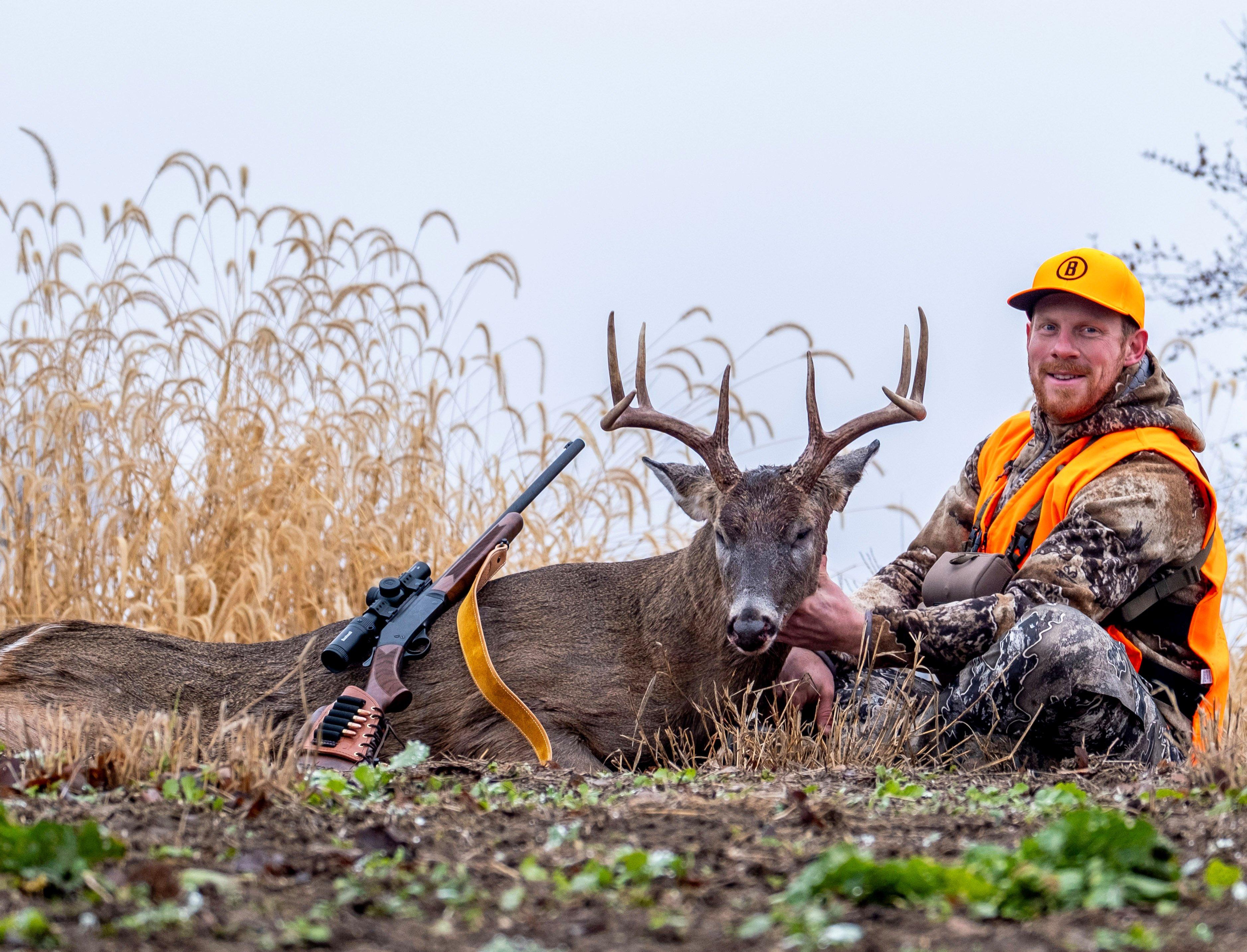
The author was overlooking a winter wheat plot that stays light through the end of legal shooting time and where the maximum shot distance was 150 yards. A 1-6x24mm Bushnell scope performed admirably in this setting. Photo courtesy of Justin Moore.
The scope tube diameter itself is also important. Most tubes have a 1-inch diameter, but a 30mm tube will further enhance light transmission. So, consider spending a little extra dough to claim that advantage.
SHOP FOR A SMOOTH MAGNIFICATION DIAL
I’ve used my share of riflescopes from several optics manufacturers. A couple of times, I’ve run into stubborn magnification dials that were difficult to adjust, especially with cold fingers. The last thing you want when your target buck is making a fleeting appearance is to struggle with zooming in or out.
To that end, examine a scope in the store, if possible, and practice quickly zooming it in and out. Is it smooth and fast, or stiff and gritty? Check to see that the magnification settings are easy to see and read. Many hunters like to add a throw lever to the magnification dial for making quick adjustments with their thumbs, but not every scope is threaded for a throw lever. If that’s important to you, ask about it while you’re shopping.
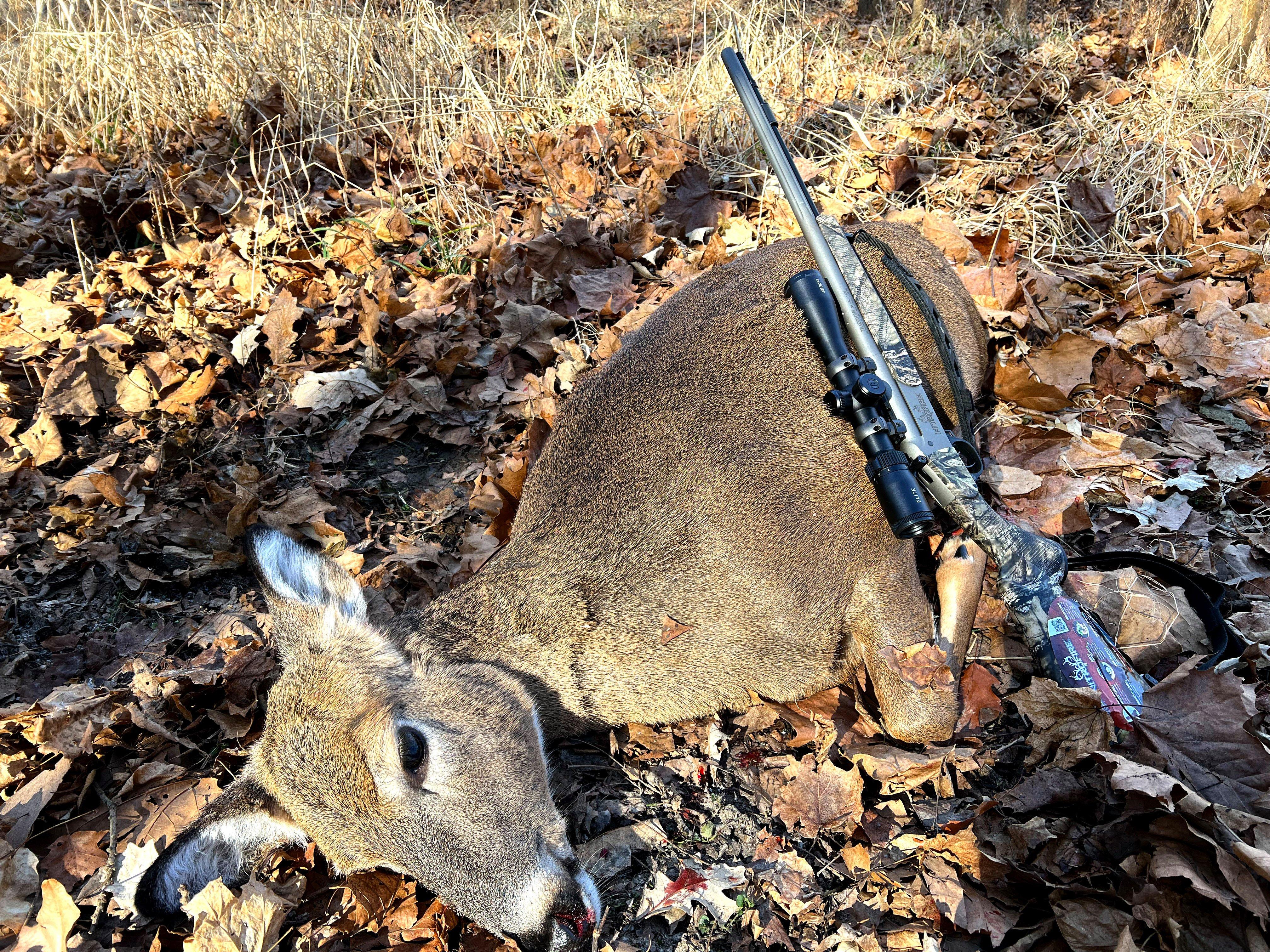
Author Darron McDougal effortlessly adjusted his scope’s magnification dial and quickly acquired this doe as it fed through the timber and offered a brief shot opportunity. Photo courtesy of Darron McDougal.
On a related front, your hunting style and setting depict your magnification needs. A mule deer hunter will likely face longer shots than a whitetail hunter in the Eastern timber, thus necessitating higher magnification. Something like a 4-12x50mm would make a solid choice.
On the other hand, whitetail hunters in the timber with shots ranging from 30 to 150 yards would do well to choose a 3-9x40mm scope. In the tightest quarters — think 50 yards and in while tracking bucks in the snow or conducting deer drives — a 1-4x24mm configuration would likely be the best, as too much magnification on a close-range shot can needlessly complicate shots.
CHOOSE THE RIGHT RETICLE
Scope reticles are kind of like drinks at a coffee shop. Black coffee fans can feel a little overwhelmed by all of the specialty flavors and creamers on the menu. Likewise, the number of scope reticles available today can be somewhat perplexing, especially for the average deer hunter.
CHECK OUT OUR LATEST CAMO PATTERN: Realtree APX
As a general rule, if you hunt in the timber where 100 yards would be considered a long shot, you need nothing more than a standard duplex crosshair. Many of today’s higher-end scopes have adjustable elevation turrets for precision dialing on longer shots, but for whitetail hunting around open crop fields, a reticle with some simple holdover marks can be easier to use and much faster. Such reticles are particularly useful on slug guns, muzzleloaders, and straight-wall rifles with arching trajectories. If you’ve practiced and know where your bullets hit at various distances, picking the correct holdover mark is as easy as choosing the right pin on a compound-bow sight once you know the range.
Bushnell, Realtree’s official optics partner, offers a variety of good reticles for whitetail hunters. “Our Multi X options give you a clear and quick aiming point that you can utilize if the target is near your zero,” said Bushnell’s Carlos Lozano. “If you need some more flexibility and insurance, a BDC (bullet drop compensating) reticle such as the DOA-QBR on our R3 and DOA-LRH800 on our R5 can give you multiple points to aim out to 500 or 800 yards, respectively. The R5 features glass-etched, illuminated reticles that feature floating center dots and multiple wind holds for more versatility in the field.”
CHECK THE EYE RELIEF
Eye-relief is the distance between the scope’s ocular lens and the projected, magnified image. Hunters can have different eye-relief requirements based on their physical stature, the firearm’s recoil, and the amount of apparel worn. If you’ve ever been “scoped” by the recoil of a rifle — I have — then you know how important it is to be able to see clearly through the scope without scooting your eye too close.
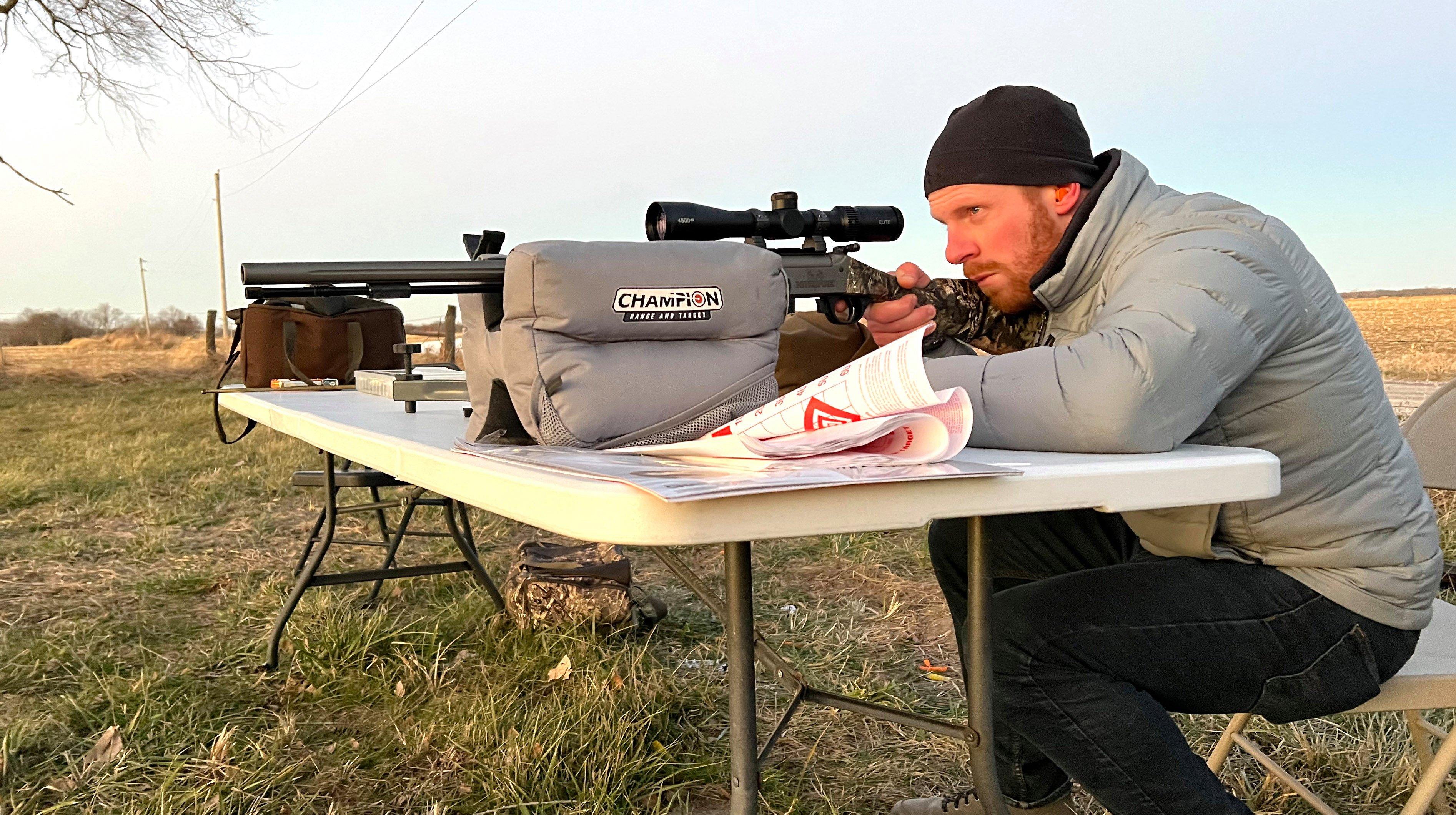
Eye-relief requirements depend on your physical stature, clothing worn, and the severity your firearm’s recoil. If you get “scoped,” then you need a scope with longer eye-relief. Photo courtesy of Darron McDougal.
“Most riflescopes have eye-relief of 3-4 inches,” Lozano said, “and it is designed into the optical system to provide for correct mounting to yield a safe working space to allow for rifle recoil and avoid scope-to-shooter contact. The combination of eye-relief distance and exit-pupil size (the diameter of the projected image) is often referred to as the ‘eye-box.’ A longer eye-relief distance combined with a relatively large exit-pupil results in a generous eye-box. The generous eye-box found in Bushnell’s R-Series riflescopes allows for a comfortable shooting position and easier full field-of-view (FOV) image acquisition, which makes it easier to get into the scope and on target.”
BE SURE IT’S DEPENDABLE
Some forms of hunting are more demanding than others. Sitting in an Alabama box blind and guarding a clover plot is way different than hopping over deadfalls while chasing an elk herd or scaling sheer cliffs while sheep hunting. Regardless, all successful hunts require precise shot placement. Shot placement falls mostly on the hunter’s ability to execute, but good equipment plays a role, too. No matter if you walk to a box blind on a foggy morning or bang your scope while hopping over deadfalls, you need a scope that won’t fail you in the moment of truth.
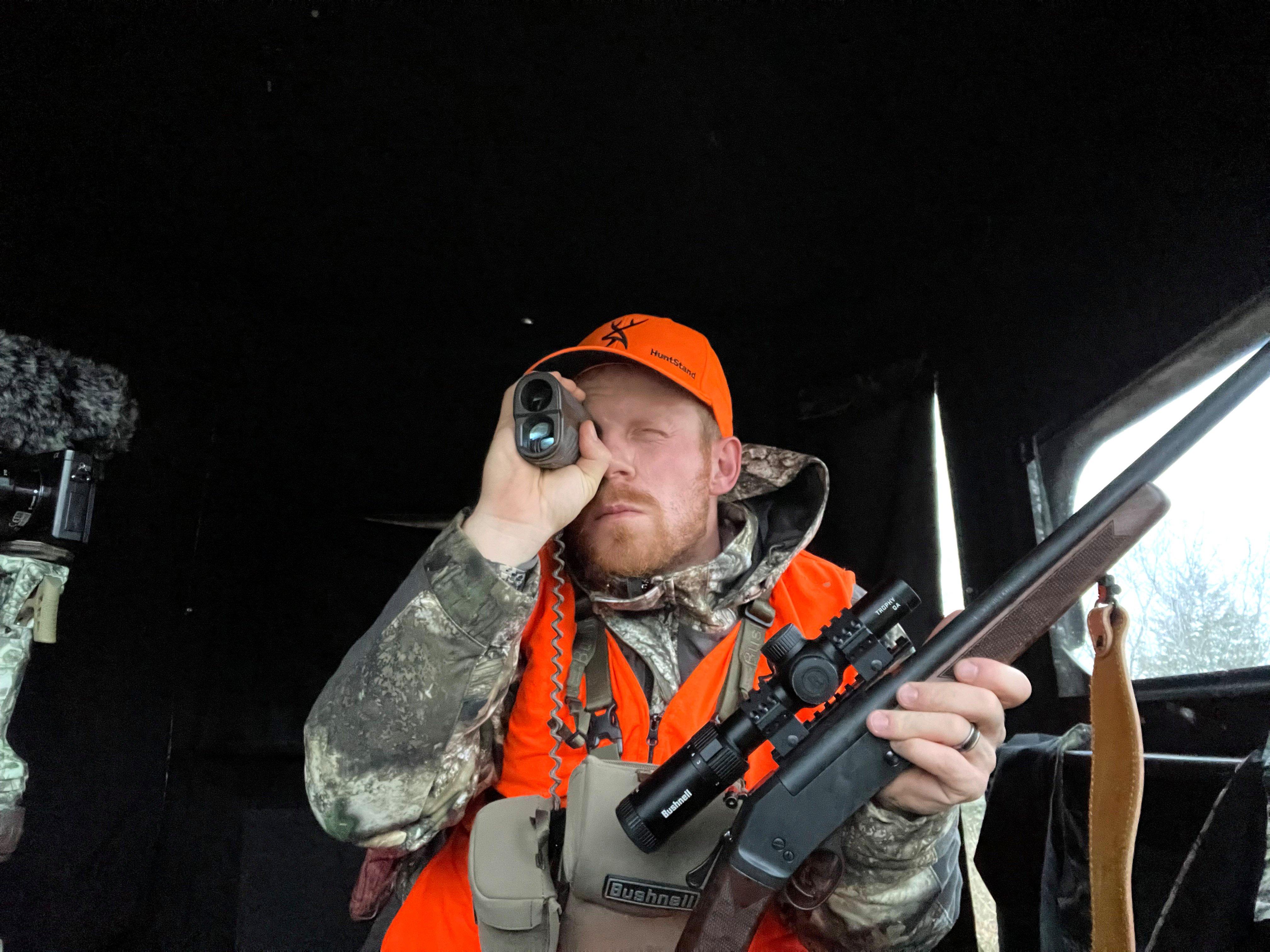
When you are offered a hard-earned shot opportunity, make sure that you’re using a dependable scope that will hold a zero and not fog up in gloomy conditions. Photo courtesy of Darron McDougal.
Manufacturers of quality, dependable rifle scopes run new models through rigorous testing prior to launching them into the marketplace so that you, the hunter, need not doubt your scope when a hard-earned shot opportunity unfolds. Lozano gave a glimpse of what that testing looks like at Bushnell.
DON’T MISS: MIDWEST RUT REPORT
“We test our optics multiple times throughout the production process with recoil testing of 1,000 impacts at a force of 400g,” Lozano said. “We also test our sealing and purging with waterproof testing (no ingress for 30 minutes submerged in a meter of water) and temp testing (-5˚ to 120˚ F). We also field-test and run them through their paces in real-world testing to ensure reliability.”
SHOP CAREFULLY
I’ve spent time hunting with firearms topped with scopes from a variety of manufacturers. I’ve learned that you don’t need to go broke to get a decent scope, but you shouldn’t skimp on quality, either. Good scopes last longer, hold zero better, and allow you to make the shot in the moment of truth. Check all five of the boxes we’ve discussed here when shopping, and you’re sure to buy a scope that will perform when it counts.




